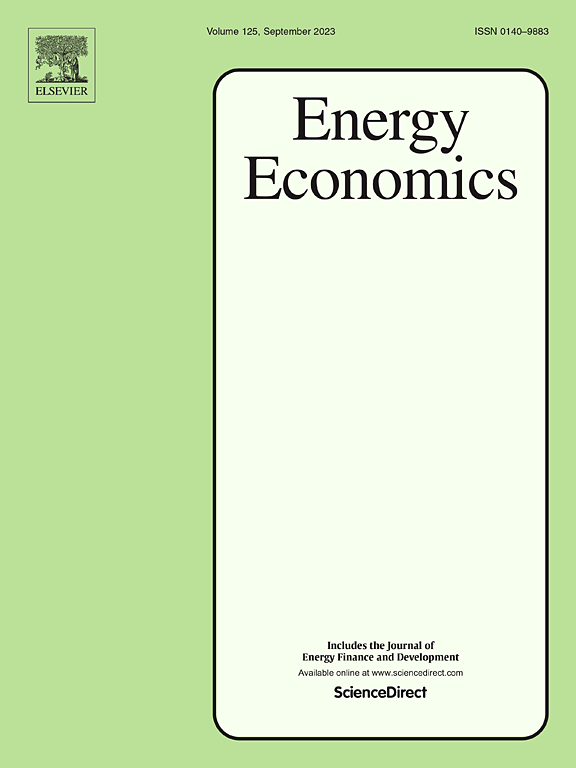A climate risk hedge? Investigating the exposure of green and non-green corporate bonds to climate risk
IF 13.6
2区 经济学
Q1 ECONOMICS
引用次数: 0
Abstract
We perform an in-depth analysis of climate risk in the corporate bond market, focusing on the green-bond issuers of the three largest European Union economies by GDP: Germany, France, and Italy. We do so by evaluating the impact, on the spreads of their green and non-green bonds, of a number of potential physical risk drivers, selected in line with the ECB climate stress tests and the extant literature, and through the fitting of ARIMAX models. Additionally, we include the log-returns of EU carbon allowances as a potential proxy of transition risk. We find that green and non-green bonds of the same issuer can differ in their exposure to the physical risk variables. Depending on the issuer, green bonds can be equally or less exposed than their non-green counterparts. Additionally, multiple firms in the renewable energy sector have green bonds which provide protection against physical risk. EU carbon allowances are not found to have a consistently significant impact on bond spreads. In line with these findings, we propose an extension of an intensity-based (reduced-form) credit risk model and assess its ability to describe and fit the bond data.
气候风险对冲?调查绿色和非绿色公司债券对气候风险的敞口
我们对公司债券市场的气候风险进行了深入分析,重点关注三个GDP最大的欧盟经济体(德国、法国和意大利)的绿色债券发行人。为此,我们根据欧洲央行气候压力测试和现有文献,并通过拟合ARIMAX模型,评估了一些潜在的物理风险驱动因素对其绿色和非绿色债券利差的影响。此外,我们将欧盟碳配额的对数回报作为过渡风险的潜在代理。我们发现,同一发行人的绿色债券和非绿色债券在物理风险变量上的暴露可能不同。根据发行人的不同,绿色债券的风险敞口可能与非绿色债券相同,也可能更低。此外,可再生能源领域的多家公司都有绿色债券,为抵御实物风险提供保护。欧盟碳排放配额并未对债券息差产生持续的显著影响。根据这些发现,我们提出了基于强度(简化形式)的信用风险模型的扩展,并评估了其描述和拟合债券数据的能力。
本文章由计算机程序翻译,如有差异,请以英文原文为准。
求助全文
约1分钟内获得全文
求助全文
来源期刊

Energy Economics
ECONOMICS-
CiteScore
18.60
自引率
12.50%
发文量
524
期刊介绍:
Energy Economics is a field journal that focuses on energy economics and energy finance. It covers various themes including the exploitation, conversion, and use of energy, markets for energy commodities and derivatives, regulation and taxation, forecasting, environment and climate, international trade, development, and monetary policy. The journal welcomes contributions that utilize diverse methods such as experiments, surveys, econometrics, decomposition, simulation models, equilibrium models, optimization models, and analytical models. It publishes a combination of papers employing different methods to explore a wide range of topics. The journal's replication policy encourages the submission of replication studies, wherein researchers reproduce and extend the key results of original studies while explaining any differences. Energy Economics is indexed and abstracted in several databases including Environmental Abstracts, Fuel and Energy Abstracts, Social Sciences Citation Index, GEOBASE, Social & Behavioral Sciences, Journal of Economic Literature, INSPEC, and more.
 求助内容:
求助内容: 应助结果提醒方式:
应助结果提醒方式:


